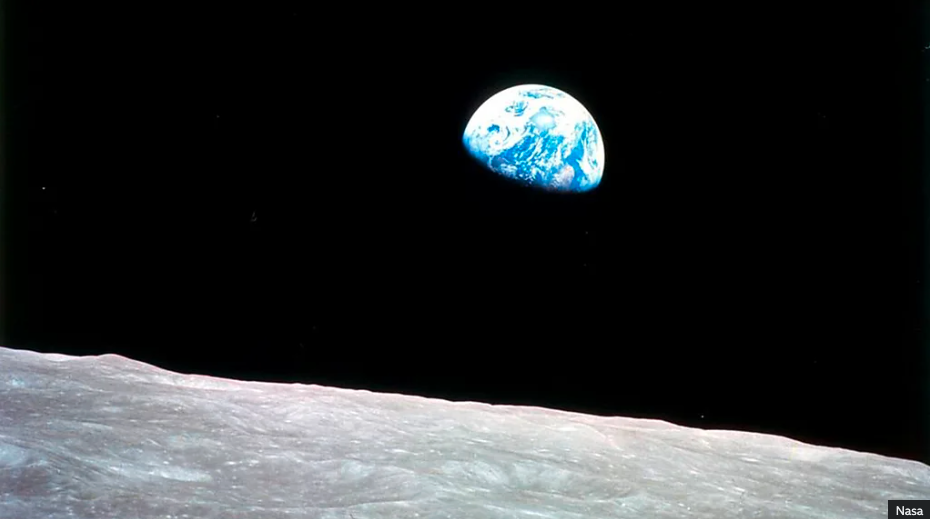November 2023
The famous Earthrise picture captured by Apollo astronauts (Credit: Nasa)
Dear friends,
I’ve been thinking lately about one of the most iconic photos of the 20th Century, only made possible by some quick thinking by astronaut William Anders. He was a crewmember on Apollo 8, the first spacecraft with people aboard to leave the earth’s orbit and circle the moon. As they were rounding the moon they looked back towards the Earth and saw something no human had ever seen before: an Earthrise. Anders saw the perspective-shifting scene and grabbed his camera to snap a shot. That image, one of the most widely shared in the world, helped people see the world and their planet differently. It helped spark the environmental movement and led to the first Earth Day.
The image helped give people a new perspective. Never before had humans been able to see their world from that vantage point, and it helped them see things more clearly. Kathleen Rogers, president of the Earth Day Network, reflected on that Earthrise photo and said: “Earthrise instilled a sense of urgency for those who were already on the front lines battling pollution and making the case that our health and planet were in danger.”
One of the challenges we all face is gaining a new perspective on our world and the possibilities for change. Too often we think that the way things are is the only way they could be. The writer David Foster Wallace famously told a story at the Kenyon College graduation: There are these two young fish swimming along and they happen to meet an older fish swimming the other way, who nods at them and says “Morning, boys. How’s the water?” And the two young fish swim on for a bit, and then eventually one of them looks over at the other and goes “What the hell is water?”
A fish cannot imagine life that is not surrounded by water. Many of us cannot fathom a world where everyone’s basic needs are truly met. A world where people and territories are not colonized. A world without racism. A world that does not rely on armed police for safety. A world where nobody is homeless. But, as one of my favorite writers and activists, Mariame Kaba, said: “Don’t ask the question ‘what do we have now and how can we make it better?’ Instead ask ‘what can we imagine for ourselves and the world?’” We have to imagine that world and build towards it.
Shifting our perspective to imagine and build towards a transformed world is a key way to be change-makers in our communities. For example, we can take inspiration from art and literature to shift our perspective. Afrofuturists imagine a world where Black people thrive. Speculative fiction writers try to narrate the future. Join me in stepping back and imagining a just and equitable world where we all can thrive. What does your re-envisioned community look like? Feel like?
Take care and imagine the world we need,
Paul
Today’s Key Point:
We cannot make a better world possible unless we break free from the status quo and imagine new possibilities and alternative paths forward. “What can we imagine for ourselves and the world?” (Mariame Kaba)
Today’s Reflection Questions:
What does the ideal future for your community or workplace look like? Feel like? Sound like? Smell like? Taste like? Take a few minutes to bathe in your imagination for a few minutes.
What types of policy proposals make you react ‘that’s not possible’ or ‘that's not realistic’? What needs to be done to make it realistic?
Read this quote by Ursula K. Le Guin and reflect on how imagination can help make transformative social change possible:
“We live in capitalism. Its power seems inescapable. So did the divine right of kings. Any human power can be resisted and changed by human beings.” - Ursula K. Le Guin
Tool/resource of the Month:
Use Rob Shorter’s Imagination Sundial to help grow you and your community's capacity for imagination.
Inspired reading/listening/viewing:

